Jas is a 21-year-old entrepreneur making six-figures with Amazon FBA. She sat down with us to talk all things FBA, ecommerce, and side hustles.
Key takeaways
- Jas built a six-figure Amazon FBA business by age 21 after starting at 19.
- She discovered Amazon FBA through TikTok's free educational content and community inspiration.
- Amazon FBA requires 2-4 hours daily for product sourcing using tools like SellerAmp.
- Clearance stores like Ross and TJ Maxx offer the highest profit margins for reselling.
- Third-party sellers on Amazon sold over 8,600 products per minute in the U.S. last year.
Meet Jas, a 21-year-old entrepreneur who built a six-figure Amazon FBA business from the ground up.
Read on to learn how TikTok sparked her journey, how she scaled her brand, and what it really takes to succeed in ecommerce and Amazon FBA—plus why she’s now mentoring others to do the same.
Key takeaways:
- Jas leveraged TikTok and other platforms to educate herself on Amazon FBA. By connecting with other young entrepreneurs, she built confidence and a network that helped her launch her business.
- By dropping out of college to pursue her dreams, Jas represents a trend in shifting from traditional education to hands-on experience.
- Her journey showed Jas the value of mentorship and community support. She now guides others and has created a network of aspiring sellers who learn from each other.
Launching a business at just 19 years old
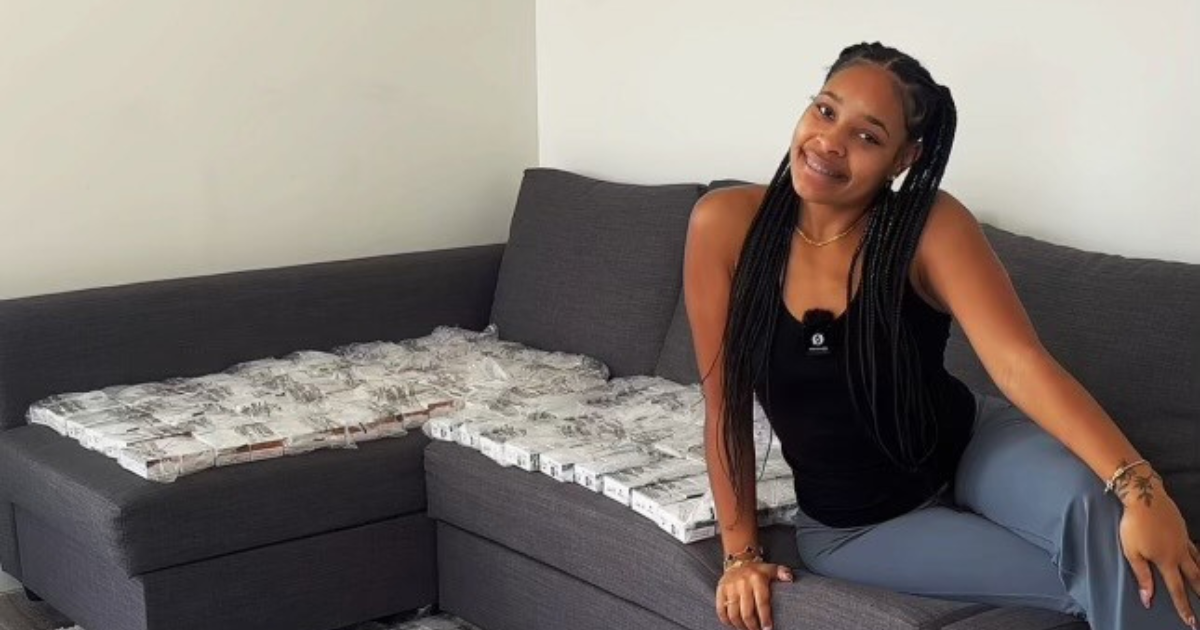
Making six figures at age 21 is one thing, but launching a business at 19 is another. For Jas Green, the bravery more than paid off.
“I started looking into the [FBA] business model when I was 19 and officially got into it when I was about to turn 20,” she recalls.
While there would always be a chance of failure, Jas figured the risk was worth the shot at financial freedom.
So why did she choose Amazon FBA instead of dropshipping or another digital side hustle?
Two key factors were at play: low barriers to entry and scalability.
Amazon FBA has a pretty straightforward premise: sellers buy brand-name products, send them to Amazon, and resell them on Amazon’s platform with minimal overhead costs.
This ecommerce model resonated with Jas, who liked the idea of selling the same products she already knew and trusted.
“I could make quick money just by reselling established brand-name products,” she explains.
FBA wasn’t just a chance to earn good money; it also gave Jas more flexibility and support than other options.
“They deal with all the customer service, which was another main incentive for me.”
You probably think that launching a business at such a young age must come with challenges. And you’d be correct – Jas did face skepticism from those around her, including family and friends.
People questioned her decision, asking if she was sure about the FBA path.
“I wanted to show everyone that I could succeed,” said Jas, and this determination fuelled her.
Dropping out of college to pursue a side hustle
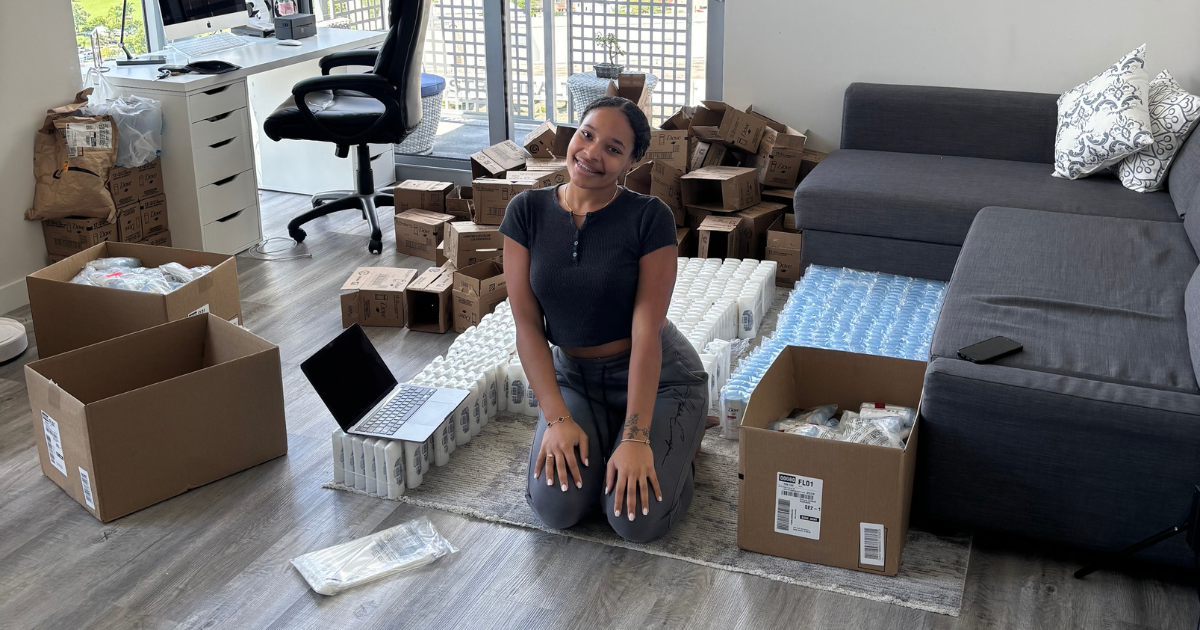
These days, graduating high school comes with a tough decision.
Do you choose to dedicate years to a college degree, or do you get your foot in the door early and take a shot at becoming a self-made entrepreneur?
After completing her associate degree in business administration (like many of us, she wanted to make her mother proud), Jas took a bold step: she dropped out of college.
“I was just like, okay, two years of business administration, I’m done.”
Jas learned throughout her degree that traditional education wasn’t actually essential for her goals.
She had started to become inspired through social media by others who weren’t pursuing typical career paths after school.
“It’s really not needed in this day and age. But you have to be really confident. You can’t just drop out without knowing what to do.”
At the crux of her decision? Jas wasn’t exactly in love with the idea of working for someone else.
“I never really knew what I wanted to do, but I did know that I didn’t want to work for anyone,” she recalls.
It’s a feeling many of us can relate to, particularly when so many of our peers are able to leverage their skills online to make more money in less time.
We were the first generation raised with the internet, after all.
Finding business inspiration from social media
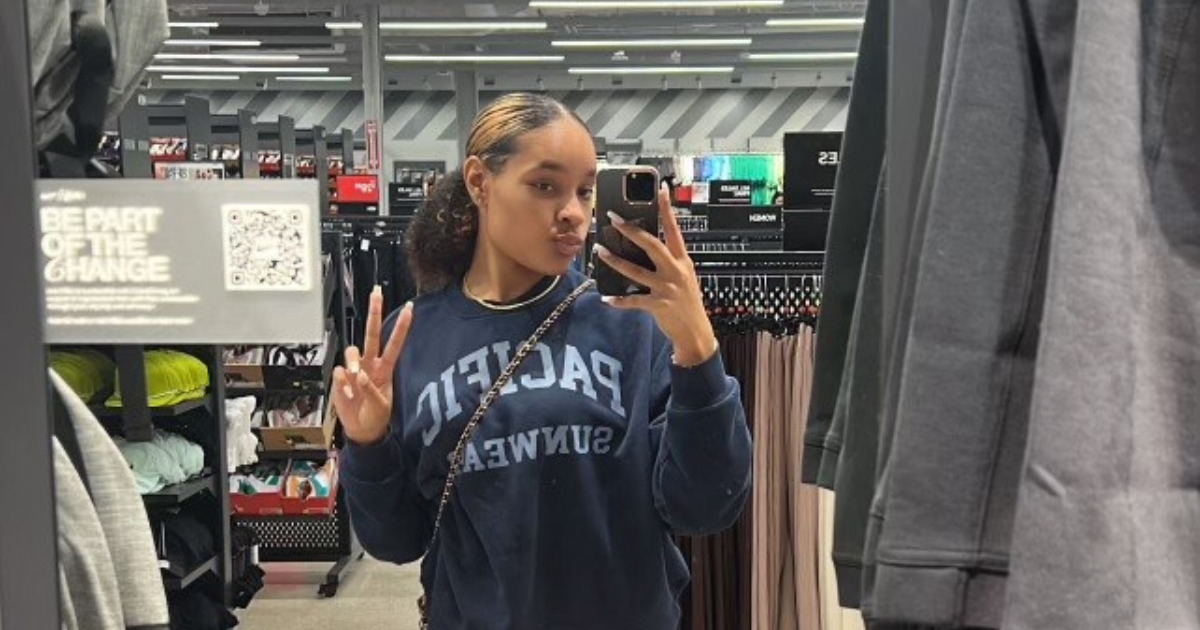
If you’re here, it’s likely because you too want to build an online side hustle or business.
I’d be surprised if social media didn’t play a part in planting that seed. It’s what first exposed many of us to the idea of entrepreneurship and making money online – and it was no different for Jas.
Platforms like TikTok inspired and motivated her to pursue a business.
“I wasn’t really confident in high school, but after seeing others succeed on social media, I flourished.”
Watching other young entrepreneurs online ignited a spark within her.
“I saw so many young people on social media just making money. The women that I looked up to weren’t relying on anyone.”
Now, as a role model herself, Jas sees the power of influence. She’s amassed a huge following for herself on Instagram, YouTube, and TikTok, with 147K, 58k, and 83K followers (respectively).
Jas also runs a successful Whop community and offers mentorship, which comes with responsibility.
“A lot of people look up to me. Hearing comments that I’m inspiring or motivating others gives me the boost I need.”
Learning online, not in the classroom
Throughout our chat, Jas emphasizes the importance of free educational content and resources.
“I found out about Amazon FBA literally on TikTok,” she shares. While working in hospitality, Jas was looking for a way to create passive income, so social media became her educational platform.
“Scrolling through my For You Page, I came across so many people posting their business tips.”
While this exposed her to one idea after another, she kept circling back to Amazon FBA. With so much educational content available online, Jas was able to grasp the fundamentals fast.
“The gist of the business is simple. I resell established products like Dove or Starbucks – things that are likely already in your house.”
This is another pro of Amazon FBA: a huge risk is removed when selling brand-name products rather than nameless, wholesale dropshipping products.
More than the appeal of working with high-demand products, though, was the convenience of it all.
FBA sellers avoid the complexities of shipping, returns, and customer service – a headache Jas was more than eager to leave behind after working as a server.
“I don’t like customers like that,” she laughs, and as a former waitress myself, I can more than relate.
Jas’ tips for starting your own Amazon FBA business
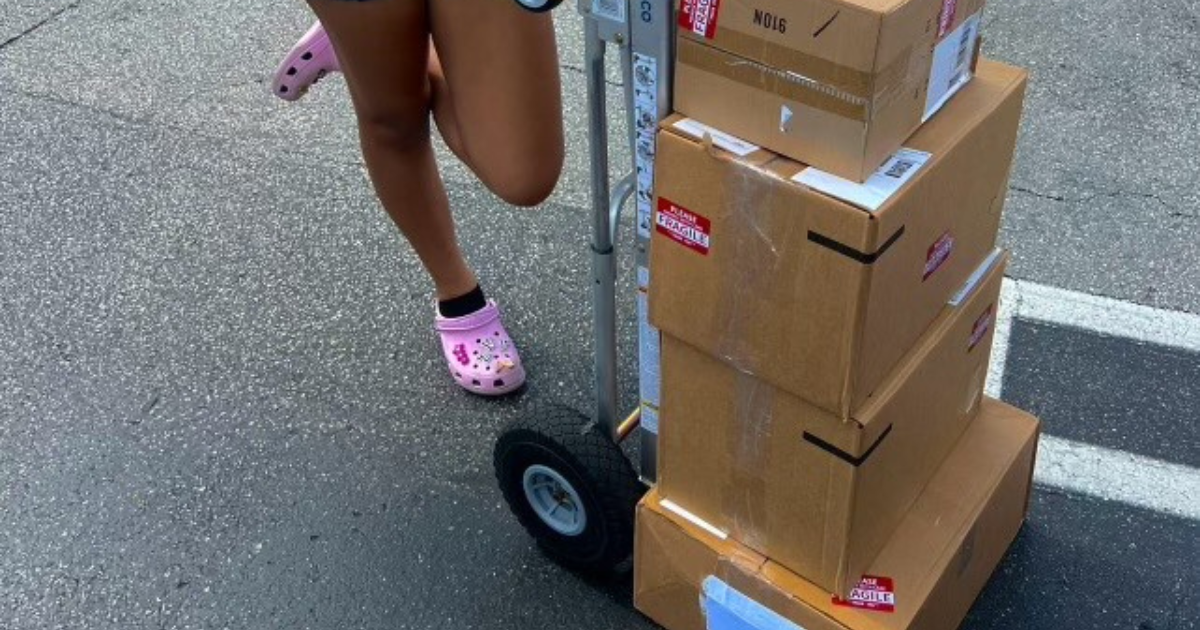
So, what does it take to start and run a successful FBA business?
As Jas shares with us, you’ll need to dedicate time.
This isn’t an overnight venture, and before diving in, some time should be spent educating yourself on how FBA works.
The process can really be broken down into four key steps: choosing your product, sourcing your product, sending your products to Amazon, and making sales.
The tools you need
One of the first decisions you’ll need to make is what to sell.
But how do you know which products to choose?
Jas recommends that sellers use software tools to determine what those products may be.
“I personally use a software called SellerAmp,”
The app allows sellers to scan products with a universal product code (UPC) in-store and instantly check their viability.
“It tells you if the product is selling higher on Amazon,” Jas explains, adding that the tool can help assess profitability, as it factors in Amazon’s fees and any potential legal issues.
Many new sellers worry about reselling brand-name products and ask Jas whether they can get sued.
Jas shares that while some brands are off-limits, the tools she recommends can identify safe options to sell, giving sellers peace of mind when selecting products.
FYI: Reselling brand name products through Amazon FBA is allowed due to the first sale doctrine and the concept of resale rights. However, some brands protect themselves against resellers through trademark enforcement, which allows them to take action against unauthorized sellers or counterfeiters. Double-checking the legality of reselling specific products with FBA is crucial.
Check out What is Reselling, and is it Legal? for more information.
The best stores for Amazon FBA
Using SellerAmp, Jas physically goes out to scout products for her FBA store.
Like any good shopper, she has her go-to spots. For one, Jas loves a clearance store.
“My favorite stores are Ross, TJ Maxx, and even the clearance sections of normal retail stores.”
These sorts of stores carry (albeit random) mid-range products for discount prices, so there are great opportunities for high-profit margins as a reseller.
“Walmart is also a big one,” says Jas, explaining that it often provides more cost-effective options than other grocery stores. You heard us right; you can resell groceries on Amazon FBA.
In her Instagram Reel titled ‘Make 6 Figures Your First Year by Reselling Groceries’, Jas explains that American cereal, for example, can be resold for a higher profit margin on Amazon to overseas buyers who don’t have it in their country.
Pretty cool, right?
Wherever she goes, Jas’s strategy involves thoroughly scanning products. She doesn't advise taking shortcuts when it comes to this step.
“Just start scanning everything,” she advises. If this seems overwhelming, you aren’t alone.
To make things easier, Jas suggests breaking the process down into manageable sections:
“Go into the beauty section one day, the grocery aisles another.”
It’s a matter of trial and error.
The importance of dedication
It takes time to find the right products to sell, and it’s a process that requires dedication on behalf of the seller.
You need to be willing to sacrifice time for sourcing.
“The reference I usually use is finding a treasure chest,” Jas explains. “You have to look everywhere, and eventually, you’ll find profitable products.”
Once you find profitable products, it’s simply a matter of replenishing and selling them.
“Literally, if I found this toothbrush going super crazy on Amazon and I found it at Walmart, but I found only 10 units, I can go to every other Walmart location. I already know what profitable products are in my mind, and I just got to pick 'em up and put 'em in my cart. I'm shopping for myself, literally.”
But it isn’t a case of just finding the right products once. What sells well this week might not have great profitability the next week.
Things change fast in ecommerce, and while we’re on the subject of dedication? It pays to also be dedicated to the learning process – even after launching your store.
Jas says she often emphasizes her followers' need for continual education and growth.
“Stay updated with trends and changes in the market,” she advises. “Ecommerce is constantly evolving, and adaptability is the main key to staying ahead.”
Is Amazon FBA viable as a side hustle?
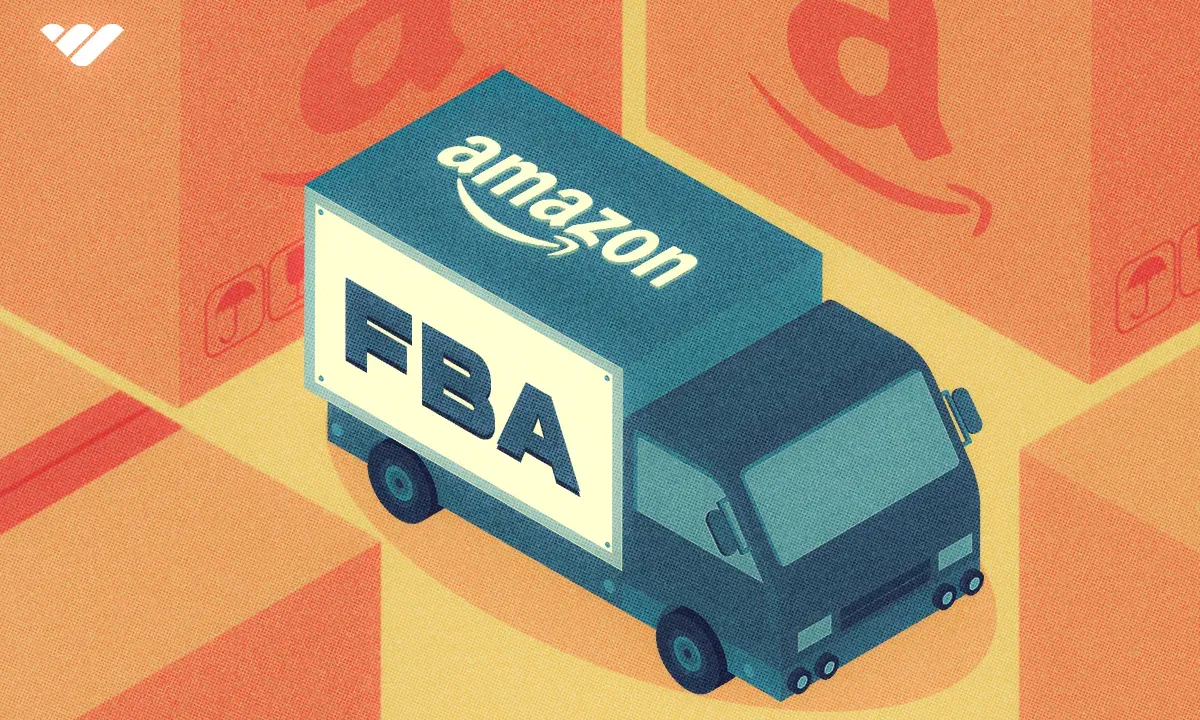
The stats don’t lie: Amazon is the most popular search destination for consumers, above search engines.
Plus, third-party sellers in the U.S. alone sold over 8,600 products per minute on Amazon last year.
Whether your plan for FBA is a side hustle or a full-time business, it’s possible.
“At the time when I first started, I had two part-time jobs,” Jas shares.
In the beginning, Jas dedicated every spare moment before and after work to sourcing products, dedicating two to four hours a day to what was originally her side hustle.
However, as she started identifying winning products, her time commitment significantly decreased.
“Once you find a product that sells well, the next step is the easiest one,” meaning the process of prepping and shipping products to Amazon.
This step does seem pretty easy. Sellers can download their own labels to print out from Amazon’s Seller Central. You pop the labels on the products, package them up, and send them out to Amazon. “
You don't have to worry about putting anything separately,” says Jas. “If you have shampoo, toothpaste, or some type of skincare, you can most likely put it all in the same box.”
There is one shipping requirement, though: you can't ship boxes over 50 pounds each. Apart from that, it’s a simple process. As Jas says, finding your products is the hardest and most time-consuming part.
If you want to build an FBA side hustle, take advantage of free educational content.
“You can find everything you need to know,” Jas assures.
And she’s right – from figuring out how to remove clearance labels from products to ensuring you remain compliant with Amazon’s shipping requirements, anything aspiring sellers need to know can be accessed at their fingertips.
Why Jas decided to teach others how to make millions with Amazon FBA

While her story is impressive, to say the least, Jas’s success hasn’t come without challenges.
“In the beginning, there are going to be mistakes,” she acknowledges, pointing to an instance early on in her journey when she lost $3000 on products that didn’t sell.
“It's not the end of the world if a product doesn't sell - you're starting out, it's going to happen,” she says.
A lot of sellers wonder what happens if their products don’t sell – do they just have to take the loss?
“So basically, you just get the unit sent back to you, and you just have to figure out what you want to do with it,” Jas says. “You can sell it elsewhere on eBay or always return the products to the store you bought them from.”
Rather than have her followers make the same errors she has, Jas believes in the power of sharing knowledge and experiences.
“Some people don’t have time to go through mistakes.”
Jas knew she wanted to document her journey, but she wasn't always planning on teaching people.
“I didn't really think people would actually care, to be honest,” she says. “One day, I went on TikTok and showed the products I found that day. I was like, 'Come RA sourcing with me,' or what's called retail arbitrage sourcing with me. And it got a good amount of views, I was surprised.”
Amazon Retail Arbitrage (RA) is the term for buying products from a physical retail store for less and reselling them on online marketplaces like Amazon for higher price points. Jas says she focuses mainly on RA and OA – which is the same as RA, only online.
“So I just posted that video, and people were telling me, teach me this, teach me that. Can you do this, or a tutorial on this? And honestly, I was just giving free advice out for a good amount of time,” Jas reflects.
She posted free tutorials on her TikTok, Instagram, and YouTube accounts. Suddenly, she was receiving DMs and comments from followers telling her they had made a hundred dollars in sales just by watching her videos.
“I just came out with a course this year, and everyone loved it. Most of my mentees have been my OGs since the first day that I posted.”
Jas realized that when it came to offering mentorship, the only way to get attention was to make people believe and trust in her. She built trust with free content and continues to build trust with her mentees by offering a unique mentorship style.
“You have access to me, and I can help you figure out what products are good and which ones aren't,” says Jas. She communicates daily with most of her mentees.
“I am texting them all day, every day, basically. If they have a product they're looking to sell, I tell them to send it to me first so I can make sure that it is good. I don't want you to lose any money.”
Despite crushing her own goals, you can tell Jas feels a deep fulfillment from seeing others thrive under her guidance.
“It’s incredibly rewarding to see someone make money from my videos and my mentorship.”
What you get by joining Jas
Joining Jas’s mentorship program offers more than just instructional videos; it provides a supportive community where aspiring entrepreneurs can connect and learn from each other. “
We have weekly group Zoom calls,” she explains.
Some sessions will cover specific topics like online sourcing, while others will be interactive discussions and Q&As.
In addition to Zoom classes, members get access to a Discord community with over 300 active members.
“When someone asks me a question, I’ll take five minutes to answer it. I don’t do yes or no!” Jas exclaims.
She says one of the best parts of her community is seeing how mentees support each other and celebrate each other’s successes.
“Whenever I’m busy, everyone is answering questions for one another in the channels.”
How you can start making money with Amazon FBA
If you’ve made it to the end of this article and feel inspired to get started with FBA, we don’t blame you.
Not only is Jas super motivating, but the best part about her story is that it’s possible for anyone – especially with the right tools and resources.
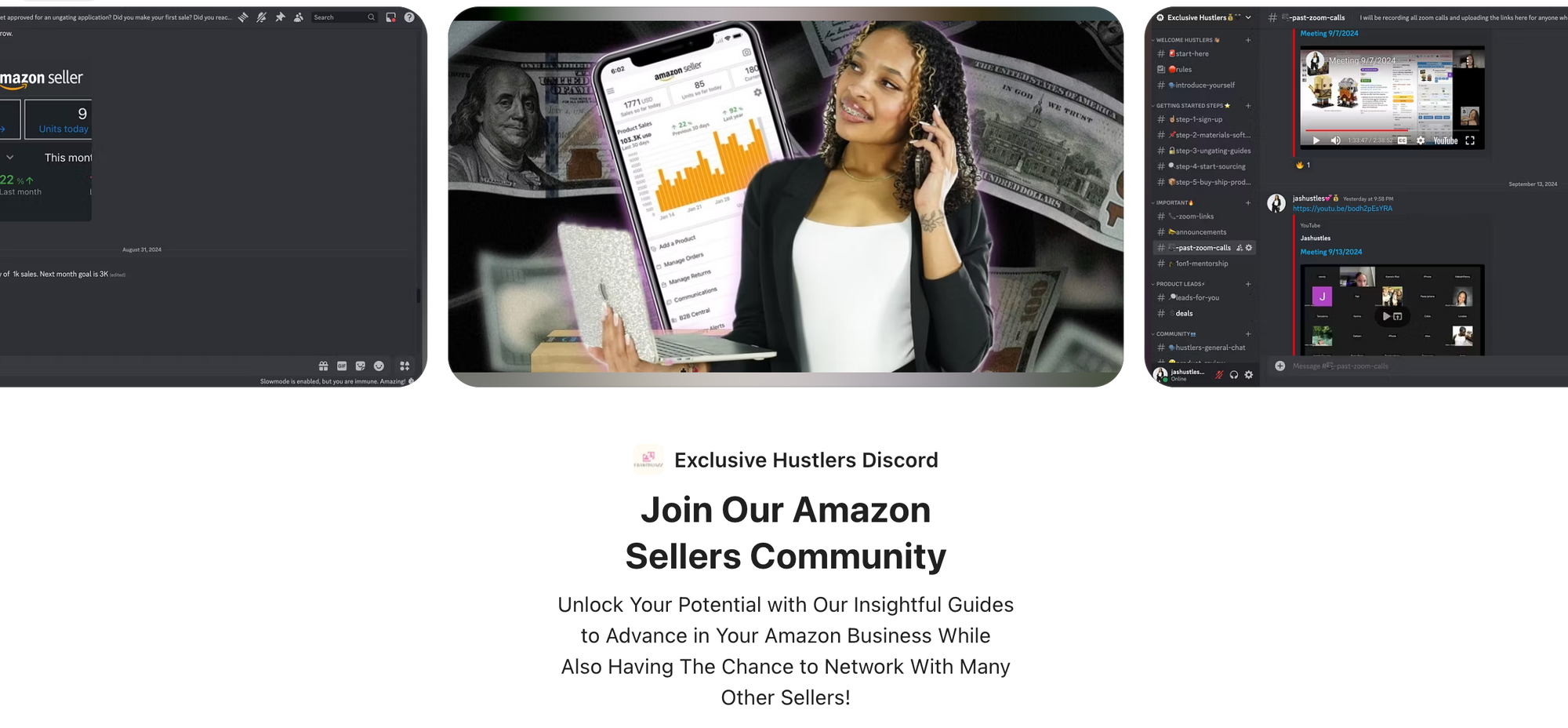
Exclusive Hustlers Discord: Jas’ community Exclusive Hustlers is built to help you unlock your potential in your Amazon business. Here you can access essential tools for $55 every 30 days, like tutorials, resources, software links, and more.
Plus, weekly networking Zoom calls with Jas and other sellers, a dedicated chat, and weekly product leads.
There are hundreds more communities, tools, courses, and groups on the Whop Marketplace dedicated to reselling and FBA.
Everything you need to start successfully selling with Amazon FBA can be found on Whop. Jas found success by following the lead of others in the field - find your community on Whop and follow in Jas' footsteps.



